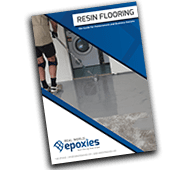Home › Advice › Know How › Knowhow
The Concrete Porosity Test
The floor covering industry utilises substrate porosity tests. Could the resin flooring industry also
benefit from these simple tests?
I was reading the ASTM 3191-16 porosity test method as used and recommend for the floor covering industry. The test is simple enough and the concept of knowing that a surface is "porous" seems important. So why would the resin flooring industry not adopt the test, or at least use it in conjunction with other methods for determining if a substrate is suitable for coating?
Below is a little variation of the test using three different test liquids. Technically I should have used a pipette with a single drop applied to the substrate, but for the purposes of this discussion this method will do.
The discussion of the test starts to evaluate if the test is suitable for resin flooring:
Video Transcription:
I wanted to explore this concept of a porosity test a little bit more. And I have done some permeability tests or penetration tests before
when I was testing different forms of prep.
I had ground areas and I was testing to see what the degree of preparation was needed in order to get the same amount of penetration of different liquids. And I think that was useful, and you can go back and look at that post and see what it was I was trying to achieve.
But today was more about grasping the concept of the porosity test as they're used in the floor covering industry. And there is an ASTM standard.
But the test is you drip some water, about half a milliliter of water onto the concrete. And within a minute, if it has penetrated into the concrete totally, it's deemed as porous. And if it takes longer than a minute, it's deemed as non-porous.
I think it's a useful test. It'll serve a purpose. But even just doing a little test on unprepared concrete, which is what you do actually see in the floor covering market, I realise that it's going to show that the concrete is porous, even though it is unprepared.
In our terms, in the resin game, we are saying there's been no mechanical preparation. So it's not typically deemed acceptable for resin flooring. But the porosity showed me that it was porous. And in theory then, is it good enough to then go ahead and stick your flooring system or adhesive, or coatings, whatever it is over the top of.
I think porosity tests serves a purpose, but I want your feedback. I really wanted to gauge what do you think. You've probably felt the downfall of not having good porosity into a prepared slab. And so what do you think? Is the porosity test a useful tool or is it misleading? Or how can we make it a useful tool in the resin flooring same? So that's my question for the day.
I'm Resin Jack, as always, take care and keep smiling.
- Epoxy Flooring Short Courses
- Garage Granite Installation Course
- Bronze Card Course
- Silver Card Course
_800x271a.png)
